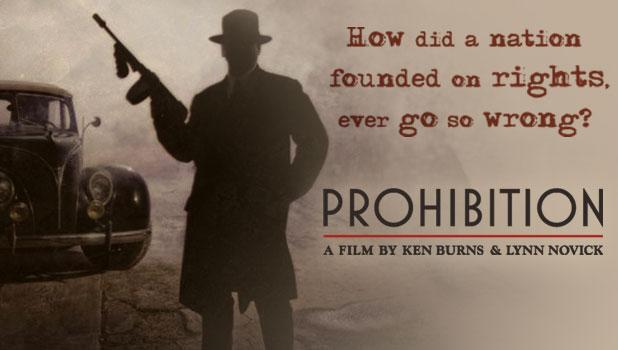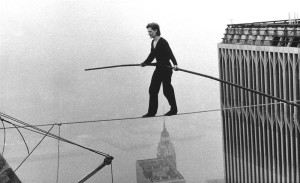Every once in a while a student will contact me with an interest in enrolling in the Film School Solution coaching course, but with the caveat that they are interested in documentary filmmaking. And while I know most people and myself are more focused on narratives, I want anyone considering documentaries to realize that even if you are working with a real life subject, the fundamentals of good storytelling are required for a good documentary.
 Seriously.
Seriously.
The only thing worse than a bad student narrative film are bad student documentaries that are boring, preachy, or way too serious, because the filmmakers don’t respect the audiences need to be engaged in a compelling story.
There is a reason why stories like “March of the Penguins” and Michael Moore’s works do so well. They engage and entertain. They are about topics people care about or are controversial. They include tension, likeable or hateable characters, and there is a narrative.
I am huge fan of documentaries and I decided to list 3 of my favorites that are not only very entertaining, but at least 2 have been related to Hollywood movies or TV Shows.
#1. When We Left Earth: The NASA Missions
The actual NASA missions to the Moon are fascinating and dramatic tales of human ingenuity, courage, and triumph. We take our technology for granted these days, which is why it’s so mind blowing to realize that we sent human beings 100,000 away to an orbiting satellite with computers the size of Buicks. We’re talking 40 year old technology, mounting human beings on rockets that were once ballistic missiles, risking death on national TV. It was incredible.
The actual build up of the Mercury missions, when we sent the first American into space Alan Shepard is harrowing enough. They had this guy mounted on a rocket with tons of TNT level explosives. He sat on top of the rocket for four hours because nobody in Mission Control wanted to be the one to give the order. His heart rate was 200 beats per minute resting, he pissed himself, and he finally said “let’s do it”, and they really didn’t know if he was just going to get blown up, or make it through the atmosphere.
The Doctors thought that in space, because of zero gravity, your retina would detatch and your eyeball would come out of its socket. Or you wouldn’t be able to swallow.
 We take it for granted, but they really didn’t know what would happen. That is real life courage, something you don’t see much these days but is great inspiring material for a good doc.
We take it for granted, but they really didn’t know what would happen. That is real life courage, something you don’t see much these days but is great inspiring material for a good doc.
And it’s amazing to see the progression from one guy in space for a few orbits, up to dual pilot missions, into the Apollo Missions where they sent guys into deep space to fly around the moon, and then finally to the moon.
To date, the only big Hollywood movie made about this program was Apollo 13, directed by Ron Howard and starring Tom Hanks. It’s a nail biting story of the only time in all of the NASA missions to that point there was a major malfunction, and everyone had to figure out how to get the astronauts home.
Watching the documentary’s account of the cry tank stir, the astronauts having no idea what was wrong, having to jettison their command module… is more harrowing than the movie version.
And that’s the thrilling thing, when I watch the interviews with the guys who went into Space, you think this really happened. And I can hardly believe it. The story is so big it trumps the individual personality of any one character, but that is a story worth telling.
#2. Man on Wire
This is the story of Philippe Petit, a real life Frenchman tight rope walker who walked between the Twin Towers in 1974. While the NASA missions doc is much more epic, this doc is much more in alignment with what you would consider shooting: the story of one remarkable person and something incredible they did.

The doc delves into Petit’s daredevil and childlike personality, his history, and how he become obsessed with the idea of walking between the two towers after the buildings were constructed. So, like any good narrative, you have a likeable character on a mission. The time we spend with Petit we get to know him – he is arrogant and a little (or a lot) insane, but you just like him, he is so damn enthusiastic. He is willing to risk his life for his dream, which is something extraordinary.
Where the movie takes on Hollywood level tension is when you actually hear about how they pulled off the walk itself. Sneaking into the WTC, setting up the wire, it’s all incredible, terrifying. You know he survives, but you can’t stop listening to the story to see how it all went down.
A tight rope walker needs tension on the line to walk across without falling. Similarly a good narrative needs tension, whether it’s a doc or fiction, and this is where many docs fail. Watch “Man on Wire” to see a great example of a story that builds the tension more and more intensely until the very end, leaving you feeling almost as exhausted as if you had walked across the wire yourself.
#3: “Prohibition” by Ken Burns
 Ken Burns has made a hell of a lot of good docs in his day, but my most recent favorite is one about the period of Prohibition in America. I’m a huge fan of “Boardwalk Empire” and the time period of the 20s. It was a weird time in America. Can you imagine if alcohol was illegal today? Seriously, it boggles the mind. The Social Media backlash alone would be so fast it would never get off the ground. But 100 years ago, our Congress voted to make it a crime to take a drink.
Ken Burns has made a hell of a lot of good docs in his day, but my most recent favorite is one about the period of Prohibition in America. I’m a huge fan of “Boardwalk Empire” and the time period of the 20s. It was a weird time in America. Can you imagine if alcohol was illegal today? Seriously, it boggles the mind. The Social Media backlash alone would be so fast it would never get off the ground. But 100 years ago, our Congress voted to make it a crime to take a drink.
And if you think Obamacare is causing problems, it’s nothing compared to the chaos caused by the Volstead Act.
Many of the characters form “Boardwalk Empire” from Enoch Thompson to George Remus to Dean O’banion to Al Capone (of course) were real gangsters really benefited from this ridiculous legislation. I have been watching the doc along with “Boardwalk” and its cool to see how the show’s writers incorporate the real life historical facts into the story.
But what’s even more fascinating are the other stories of the impact of Prohibition on cities and people you haven’t heard of. The history of the legislation is equally fascinating – I did not realize that before that time people drank in America about 10 times more than today. People drank with breakfast, lunch, and dinner, it was much more common for families to be torn apart by alcohol, and that is what spurned the temperance movement.
The Temperance movement was spearheaded mostly by women – and one named Carrie Amelia Moore Nation was definitely movie worthy. Rather than peacefully protesting, this woman actually went into saloons with rocks threw them into the glass on the storefront and into their mirrors until they were destroyed. She got arrested, released, and did this again and again. She was like Ghandi but violent, a woman, and she used rocks.
Burns covers a lot of ground in this 3 part series, but what’s interesting to think about is how many of the stories in this series could be worthy of their own documentary. Or, did these stories have limited appeal and were better told in a 5 minute segment within a larger context. Burns is a master of keeping people interested in historical subjects that are epic and may not seem terribly compelling at first glance.
Whether Directing Docs or Narratives, Audience Engagement is Key
What’s never discussed in any film school is simple the importance of maintaining an audiences attention. Whether you want to tell stories about real life events or those that take place in fictional worlds, you need to understand the art of making people want to know “what the hell happens next?” That is what a good director needs to know how to do regardless of format. To discover the only film program that teaches audience engagement in depth and prepares you for a directing career, check out http://filmschoolsolution.com!
 Film School Secrets: Insider Advice for Aspiring Filmmakers Learn Filmmaking as Creative Professional, Not a Starving Artist
Film School Secrets: Insider Advice for Aspiring Filmmakers Learn Filmmaking as Creative Professional, Not a Starving Artist